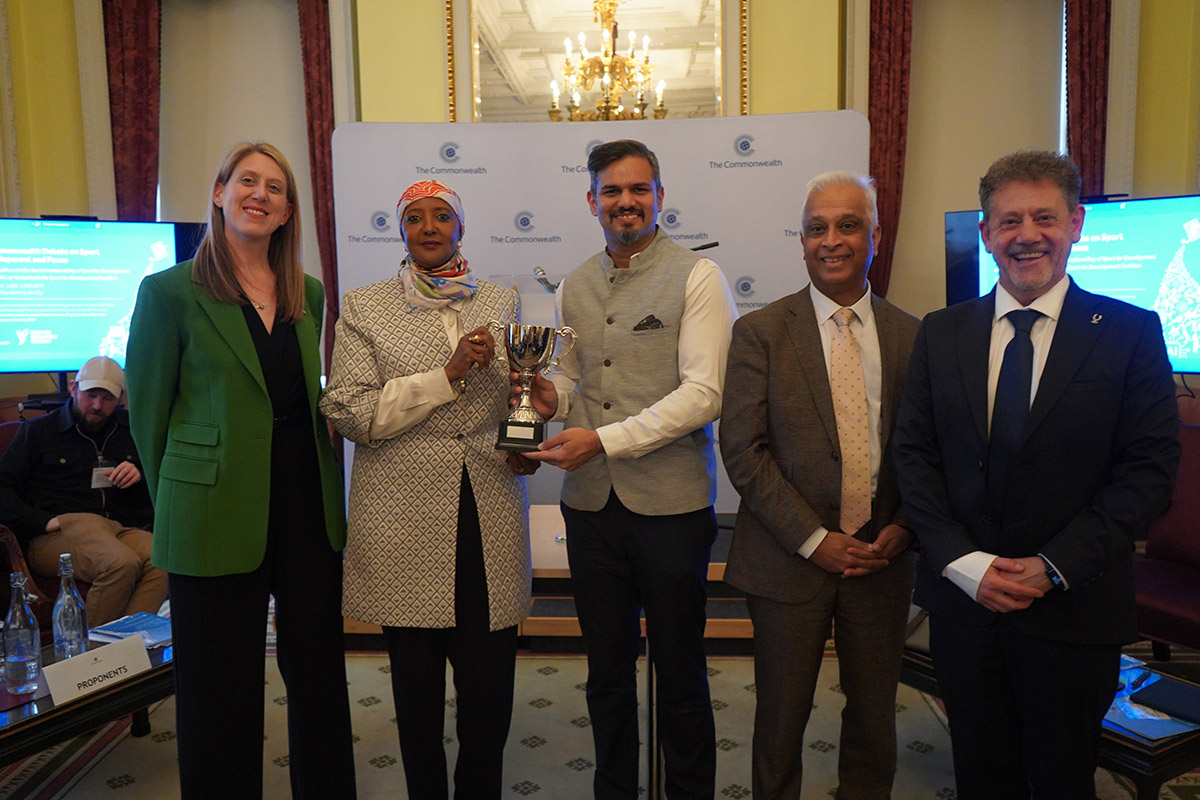“What you should know about albinism”
February 10th, 2017 Myths and misunderstanding surround albinism, writes Paul Odhiambo, 26, a Commonwealth Correspondent from Nairobi in Kenya. Although rates of the genetic condition are higher in African than in North America or Europe, inadequate information is still a common problem.
Myths and misunderstanding surround albinism, writes Paul Odhiambo, 26, a Commonwealth Correspondent from Nairobi in Kenya. Although rates of the genetic condition are higher in African than in North America or Europe, inadequate information is still a common problem.
What is albinism? Albinism is an inherited genetic disorder that decreases the quantity of melanin pigment, generated in eyes, hair, and skin. Melanin pigment plays a role in the formation of hair, eyes and skin color.
Albinism classification depends on the type of gene mutated. OCA (Oculocutaneous albinism) is common and impacts on hair, skin, and eyes. OA (Ocular albinism) is less common and only affects the eyes. The skin of the affected person may seem the same or fairly lighter than his or her other family members. It is caused by genetic defects in GPR143 gene.
In the past, researchers have used various methods to classify OCA. However, the current study has applied the use of DNA analysis to group OCA into seven classes.
OCA1 occurs as result of a genetic defect in an enzyme known as 3-monooxygenase, which aids in the transformation of tyrosine protein into melanin pigment. OCA1 is further divided into OCA1A and OCA1B. In OCA1A 3-monooxygenase enzyme is inactive and there is no generation of melanin pigment resulting in very light skin and white hair.
In OCA1B, 3-monooxygenase is somewhat active hence small quantity of melanin pigment is produced resulting in hair that is light brown or orange/ yellow, and sometimes more melanin pigment in the skin.
Genetic defects in P protein lead to OCA2. P protein assists 3-monooxygenase enzyme in its functions. People who suffer from OCA2 produce a small quantity of melanin pigment and sometimes have blond to brown hair color.
The TYRP1 genetic defect results in OCA3. TYRP1 protein contributes to functions of the 3-monooxygenese enzyme. OCA3 is characterized by the substantial production of melanin pigment. Genetic fault in SLC45A2 protein leads to OCA4. SLC4A2 plays a role in 3-monooxygenase enzyme activities. Individuals with OCA4 produce melanin pigment as people with OCA2. In 2012 and 2013 researchers discovered OCA5, OCA6, and OCA7. These researchers stated that three additional causative genes were responsible for OCA5-7. However, OCA5-7 are still considered unknown.
Other than OCA and OA, there are three related albinism-related conditions with distinctive characteristics. They include; HPS (Hermansky-Pudlak Syndrome), Chediak-Higashi Syndrome (CHS) and Griscelli Syndrome (GS). HPS is caused by a group of at least eight genes. HPS is recognized by brushing and bleeding of the skin of affected persons. Other types of HPS are associated with bowel and lung diseases. CHS is caused by a mutation in LYST gene, and it has similar symptoms to OCA, hair is often blond or brown with a silvery sheen and skin is always creamy-white-greyish in color. The specific signs for GS are not well documented.
Challenges albinos faced range from medical problems to social discrimination. In sub-Saharan Africa, people with albinism and who cannot access proper skin protection are always susceptible to skin cancers. However, if these people use necessary skin protection, they can live a normal life. Social discrimination is the main challenge albinos are facing. Albinos have traditionally been socially excluded since the majority of people do not understand their conditions. In most circumstances, social stigmatization always occurs.
How can cases of albinism be reduced? According to my personal view, I think high rate of albinism in Sub-Saharan Africa is due to lack of awareness of albinism. Most people are not aware of what causes albinism, or how it is passed one generation to another.
When people are well informed about albinism, the high prevalence of albinism in Sub-Saharan Africa will reduce as in the United States and Europe. Since albinism is genetic, one is albino if he or she has two dominant genes. This fact is the reason that normal parents can have an albino child. If both parents have recessive genes for albinism, there is one out of four chances at every pregnancy the child will be OCA, because genes for OCA occur in autosomal chromosomes.
Genes for OA are located in X chromosomes, and this why most people affected by OA are males. Males require only one X chromosome from their carrier mothers to be ocular albinos.
Doing a research of one’s genealogy background can help in reducing chances of albinism. For example, if albinos marry individuals who are non-albinism recessive carriers, chances of having an albino child are reduced. If an albino person marries another, or an albinism-recessive carrier, this will lead to increased chances of having a child with albinism.
People with albinism should be accepted in our societies. People should stop coming up with myths which do not make sense about albinism.
Reach me on Twitter @OngoroPaul
photo credit: Brandon Blahnik WhiteBlackEyedSusan via photopin (license)
…………………………………………………………………………………………………………………
About me:
I am an industrial chemist and aspiring entrepreneur. I am interested in green chemistry, environmental conservation, good governance, entrepreneurship, chemistry, biochemistry and good education.
I believe if government and different organizations give an opportunity to youths, they can transform their lives and their communities. In many occasions, youths have been considered as needy and hopeless; therefore, they are not allowed to contribute to national matters. However, they are the people who know their problems.
…………………………………………………………………………………………………………………
Opinions expressed in this article are those of the author and do not necessarily represent the views of the Commonwealth Youth Programme. Articles are published in a spirit of dialogue, respect and understanding. If you disagree, why not submit a response?
To learn more about becoming a Commonwealth Correspondent please visit: http://www.yourcommonwealth.org/submit-articles/
…………………………………………………………………………………………………………………




